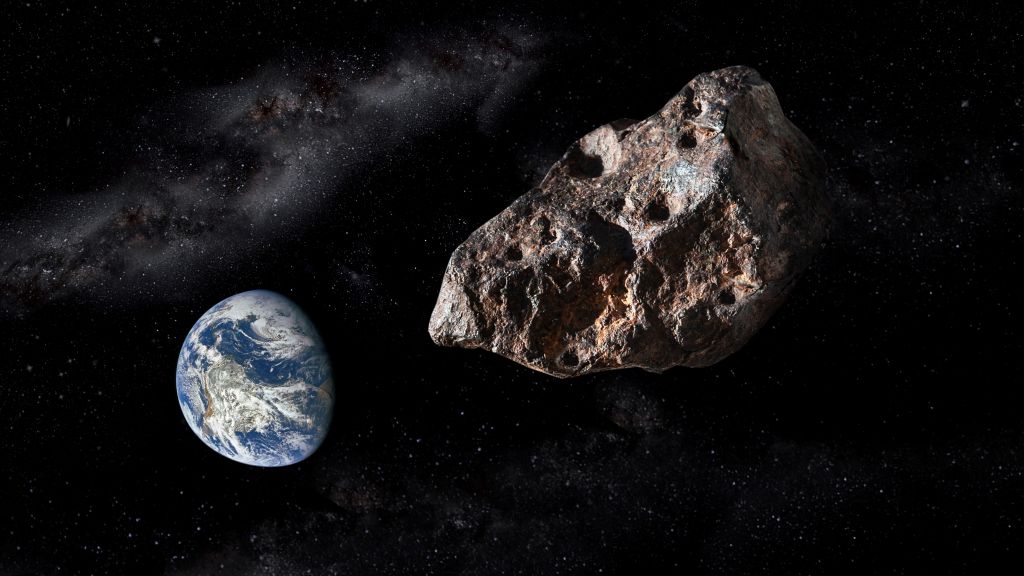Blue-whale-size asteroid to screech past Earth in close encounter on June 6
The asteroid is predicted to miss Earth by more than 2 million miles.

An asteroid up to three times larger than a blue whale will zoom past Earth on Monday (June 6) at more than 16,000 mph (26,000 km/h), according to NASA.
The asteroid, named 2021 GT2, is predicted to safely miss our planet by more than 2.2 million miles (3.5 million kilometers) — or roughly 10 times the average distance between Earth and the moon. Astronomers first detected the space rock last year and estimated its size at between 121 and 272 feet (37 to 83 meters) wide. While that sounds pretty big — between one and three times the length of a blue whale — it isn't large enough to be considered a potential hazard to Earth.
2021 GT2 is an Aten-class asteroid, meaning it orbits the sun more closely than Earth does (once every 342 days, in this case), and its orbital path crosses Earth's orbit. Astronomers know of more than 1,800 such asteroids — many of which are considered potentially hazardous.
Related: What are the largest impact craters on Earth?
After June 6, its next close approach to Earth will occur on Jan. 26, 2034, when the asteroid passes within 9 million miles (14.5 million km) of our planet — significantly farther out than the upcoming approach.
The asteroid is considered a near-Earth object — a term given to asteroids and comets that orbit within 1.3 astronomical units of the sun. (An astronomical unit is the distance between Earth and the sun, about 93 million miles, or 149.6 million km.) NASA monitors tens of thousands of these objects, predicting the trajectories of each one from present day to hundreds of years into the future. At the moment, astronomers do not think that any near-Earth objects pose a threat to Earth.
Still, scientists want to be ready if a near-Earth asteroid's trajectory should suddenly change following an unexpected incident — say, one near-Earth asteroid colliding into another and showering large chunks of debris throughout the solar system.
Get the Space.com Newsletter
Breaking space news, the latest updates on rocket launches, skywatching events and more!
NASA is currently in the midst of testing whether a large asteroid could be knocked off course by crashing a rocket into it. In November 2021, NASA launched an asteroid-deflecting spacecraft called the Double Asteroid Redirection Test (DART), which will slam head-on into the 530-foot-wide (160 m) Dimorphos asteroid in autumn 2022. The collision will not destroy the asteroid, but it may change the rock's orbital path slightly, Live Science previously reported.
Originally published on Live Science.
Join our Space Forums to keep talking space on the latest missions, night sky and more! And if you have a news tip, correction or comment, let us know at: community@space.com.

Brandon has been a senior writer at Live Science since 2017, and was formerly a staff writer and editor at Reader's Digest magazine. His writing has appeared in The Washington Post, CBS.com, the Richard Dawkins Foundation website and other outlets. He holds a bachelor's degree in creative writing from the University of Arizona, with minors in journalism and media arts. He enjoys writing most about space, geoscience and the mysteries of the universe.










